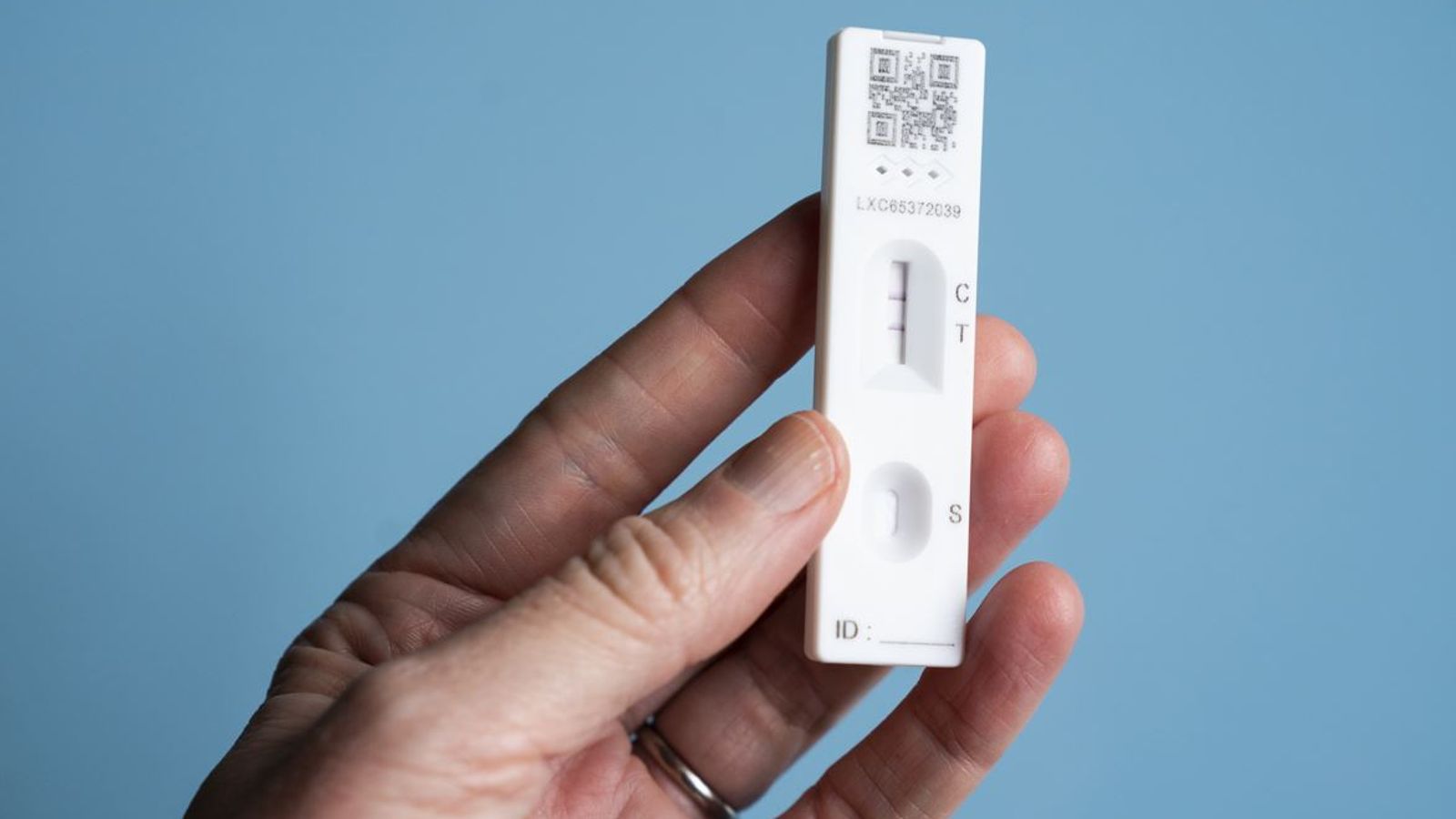COVID cases have jumped by a quarter in just a week, according to the latest official estimates.
Data released by the Office for National Statistics (ONS) show that in the week ending 26 September 1,327,900 people in the UK are estimated to have been infected with coronavirus.
That is an increase of 267,400 on the week before, a rise of 25%.
It is the highest UK total since the week to 16 August, but is still some way below the 3.8 million weekly infections in early July.
COVID-19 rates have been increasing since the start of September in the predicted autumn wave.
But while cases have risen in England and Northern Ireland, the trend in Scotland and Wales is described by the ONS as “uncertain”.
There has also been a “marked” rise in infection among the over-70s in England, up from infections among one in 60 people to one in 40.
COVID-19: ‘Concerning’ increases in COVID hospitalisations – with 250% rise in one region
COVID immune reaction could affect brain mechanisms and induce neurological symptoms
COVID inquiry ‘won’t drag on for decades’, bereaved families promised
Sarah Crofts, ONS deputy director for the COVID-19 infection survey, said: “Infections have continued to increase in England, reaching levels last seen in mid-August.
“The rest of the UK is a mixed picture, with uncertain trends in Wales and Scotland and a recent increase in Northern Ireland.
“Amongst the over-70s there has been a marked increase in infections in England this week, a trend which we will closely monitor as the winter months progress.”
In England, the number of people testing positive for coronavirus was 1.1 million, or around one in 50, up from 857,400 or one in 65, in the previous week.
This is the first time the figure for England has been above one million since mid-August.
Northern Ireland has also seen a rise, where the latest estimate for infections is 46,100, or one in 40 people, up from 23,100, or one in 80.
In Scotland, 113,000 people probably had COVID-19, or around one in 45, compared with 117,100, or one in 45, the previous week.
And in Wales, the latest estimate is 63,400, or one in 50, is close to the 62,900 previously.
Infection rates in England are highest among people aged 70 and over, at 2.5%, or one in 40, up from 1.7%, or one in 60.
Rates are lowest among children from school Year 7 to 11, at 1.6% or one in 60.
The number of hospital patients in England testing positive for COVID-19 continues to climb.
A total of 9,631 people with coronavirus were in hospital as of 5 October, according to NHS data.
This is up 37% from 7,024 a week earlier and is the highest figure since 3 August.
There has also been an increase in Scotland and Wales, and in Northern Ireland the recent fall in numbers has levelled off.
Previous waves of COVID have been driven by the arrival of a new variant of the virus.
But it has remained stable for several months, with BA.5, part of the Omicron family, causing most infections since June.
The most likely cause of rising infections is fading immunity, because most people have not had a jab since last winter.
And even among the over-75s vaccine uptake has been dropping with each successive dose.
More than 96% had the first two doses, but that fell to 94% for the booster last winter and to around 79% for the spring booster.
So far just over 40% of people over 75 have had the autumn booster.
It means large numbers of those most likely to suffer serious disease have low protection as infection rates pick up, a worry for hospitals already busy with winter infections and trying to reduce long waiting lists.







